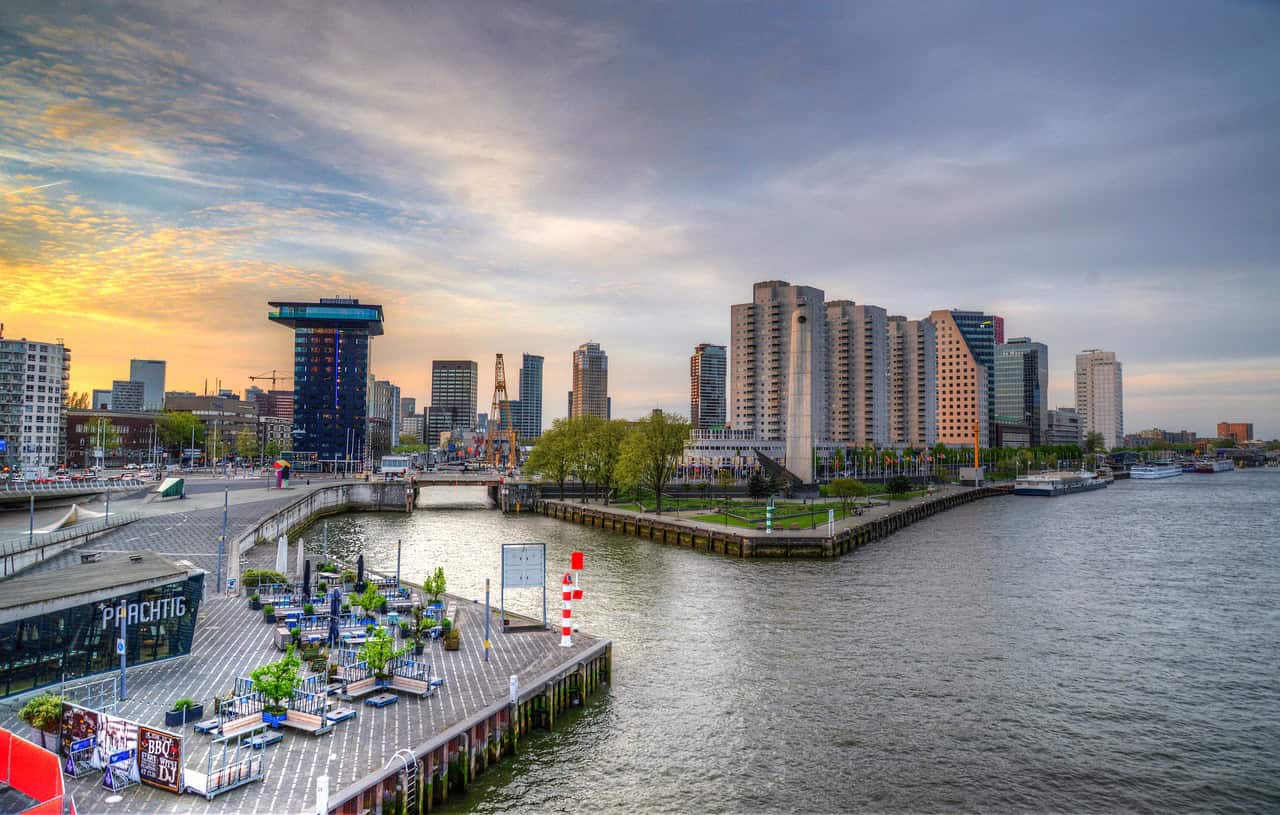
Only a couple of micrometers. That is how thin a plastic fiber is that is being manufactured by IME Technologies in Geldrop, the Netherlands, by means of electrospinning. For comparison: a human hair is a hundred micrometers. The electrospinning of such fibers, therefore, requires a meticulous process, which is not easy to manage and/or to reproduce. IME Technologies does master this process, thanks to ‘our unique machinery and know-how’, says co-founder and managing director Ramon Solberg, who also calls it the ‘best-kept secret’. Thanks to that secret, IME Technologies caught the attention of the medical sector. They have clients on almost all continents (except for Antarctica). However, their ambitions reach even further: “We want to generate a revolutionary change in the area of regenerative medicine.”
“All large universities and TNO’s, both nationally and internationally, know about us”Jaap Vermunt, IME Technologies

Process Control
IME Technologies is a spin-off of the Technical University of Eindhoven (TU/e), just like more (successful) companies in Brainport Eindhoven. Solberg started his company at the TU/e in 2008, to market the equipment developed during his graduation project on electrospinning. It quickly became apparent that there was a great need for such highly accurate machines and large developments followed in rapid succession. “We were the first company to develop a machine for electrospinning with climate control. The manufacturing of such thin fibers starts with a liquid plastic droplet, which is being further stretched in an electrostatic, contactless way. After cooling or evaporation, a solid fiber remains.” Operations manager Jaap Vermunt continues: “The trick is to constantly maintain the same quality during that process, which is very susceptive to the weather because of the static fields. That is why we need climate control.” So much for the best-kept secret, because of which Solberg’s company received a lot of recognition from the medical world. “In that world, the quality and reproducibility of electrospun materials is of the utmost importance.”
Business solutions
In 2012, Solberg acquired the company from the TU/e and moved to the current building in Geldrop. The company has been making very good progress since. “All large universities and TNO’s, both nationally and internationally, know about us”, says Vermunt. Gradually, the realization dawned that the medical world required more than “just placing machines’. “You must be able to deal with such meticulous production processes. Based on that knowledge, we started promoting ourselves as co-developers and started focusing more on solutions businesses.” Because, according to Solberg, the machine is the ‘tool’ and only part of the whole electrospinning process to manufacture the product. “That is why we nowadays also support clients during the whole development process needed to realize their idea through electrospinning. We contribute ideas, more as a partner than a contractor.” Vermunt adds: “The unique advantage of IME Technologies is that we combine both the mechanical engineering and the science aspects of such a process. That enables us to turn a question into a functioning principle.”
Endless possibilities
Thanks to that combination, IME Technologies is also able to further extend the possibilities of electrospinning. Solberg: “The spun shapes or mats ultimately constitute an implant or medical device and consist of very small fibers that copy the same properties as the connections that hold body cells together. That is why those cells feel more ‘at home’ with our product than conventional materials and implants. Moreover, we are also able to use biodegradable materials for spinning purposes. The body ultimately replaces this material by own tissue. In fact, the body is actually doing all the work and the spun implant only gives a little support. This way electrospinning can contribute to the development of ‘regenerative healing methods’, ultimately combining medical interventions with the natural functioning of the body”, says Solberg. According to Vermunt ‘it speaks for itself that this offers endless possibilities’. Manageability was key. Now that we have been able to accomplish that, it is possible to conduct better medical research to enhance regenerative medicine.” A hot topic, Solberg says: “By means of our technology, we can ultimately contribute to the development of a technology that enables the body to repair itself. We will then be able to help people for life, without them having to undergo multiple, suboptimal surgeries.”
Transition
That is the most important motivation of IME Technologies, say Vermunt and Solberg unanimously. “We want to generate a revolutionary change.” To accomplish that, they are working closely together with universities (including the TU/e) and medtech clients, Vermunt emphasizes. “It mostly starts with the question of a client, who needs something that does not exist yet, but who doesn’t have the slightest idea of the possibilities. We can help in that brainstorming process. Together we can gain insight, create prototypes and finally – hopefully – a new product. But that can take an average of two to fifteen years.” Eventually, IME Technologies wants ‘to further develop the process to be able to manufacture the implants at a commercial level.’ “My personal holy grail is to put the electrospinning process on the map within the generative medicine, including within the hospital. Then I can retire”, Solberg says with a wink of the eye. “And thanks to the special ecosystem of Brainport Eindhoven, we actually could be able to realize this. This is the best region for our company, because we always make the transition towards the multi-disciplinary technology.” That transition can be easily made in this region, so Vermunt says. “You are more than just a number here, the lines are very short and personal and that is a pleasant way of working. The involvement and the awareness of importance is clearly noticeable among all our suppliers.” Solberg confirms that: “The complete chain for the manufacturing industry you find here is important to us. Everything we need to realize our ideas – or, as I sometimes put it, to go from lab to plant – is literally around the corner.”
Photo’s: Bart van Overbeeke
This article was first published on the website of Brainport Development








